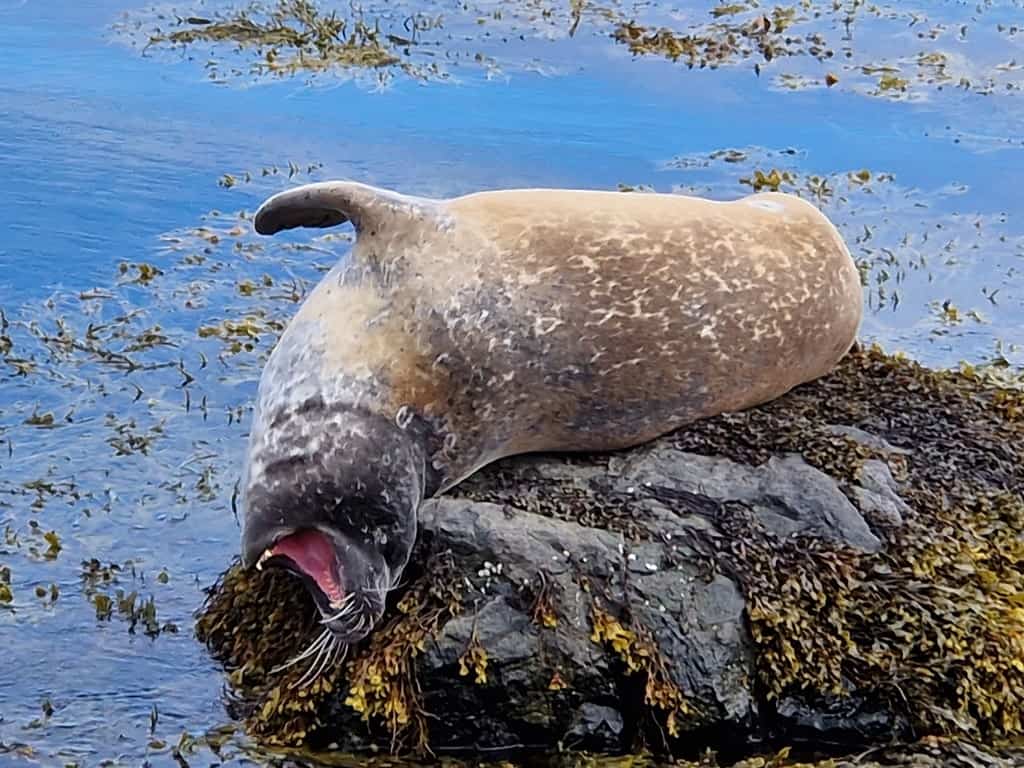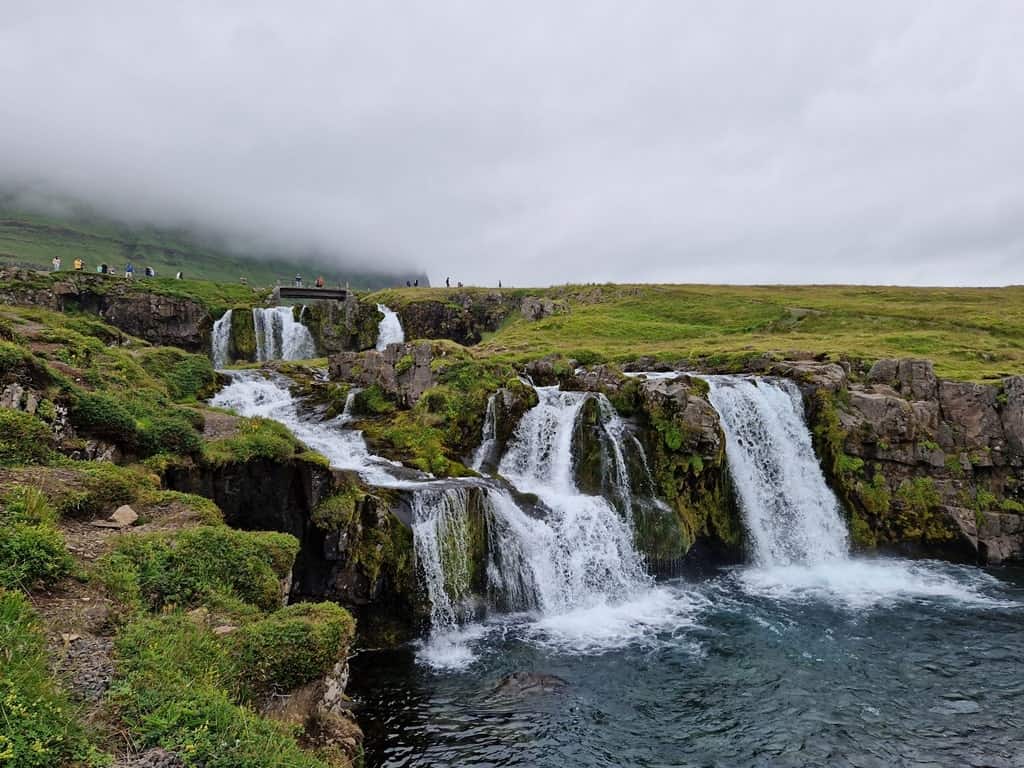Dominated by enormous mountains, pockmarked by lava fields, and carved out by volcanic eruptions, the Snaefellsnes Peninsula is a wild and exciting Icelandic destination. Here you can feel the spectacular forces of nature at work as you spend time exploring what feels like a far-flung destination — but all just a couple of hours’ drive from Reykjavik.
From whale watching and birding to hiking, stumbling across historical monuments, and discovering some epic photo spots, the Snaefellsnes truly has something for everybody to enjoy.
Disclaimer: This post contains affiliate links. This means that should you click on certain links and then subsequently purchase a product, I will receive a small commission.
Table of Contents
Visiting the Snaefellsnes Peninsula
Where is Snaefellsnes?
The Snaefellsnes Peninsula is situated in western Iceland, between the capital city of Reykjavik and the western fjords. Encompassing a dramatic landscape, its main attraction is the Snæfellsjökull volcano. This is regarded as one of the symbols of the nation and, at 1,446 meters high, can be seen on a clear day from Reykjavik.
Stretching out 90 kilometers, the peninsula is dotted with small fishing villages and towns and has long been a populated area. In fact, this storied peninsula is one of the main center points of the Laxdaela saga, which records history and legend from the 9th to the 11th centuries. The peninsula is also the setting for Jules Verne’s 1864 science fiction novel Journey to the Centre of the Earth.
Needless to say, it is the stunning geography of Snaefellsnes that has, for centuries, both shaped the people who live on this peninsula and inspired all those who visit.
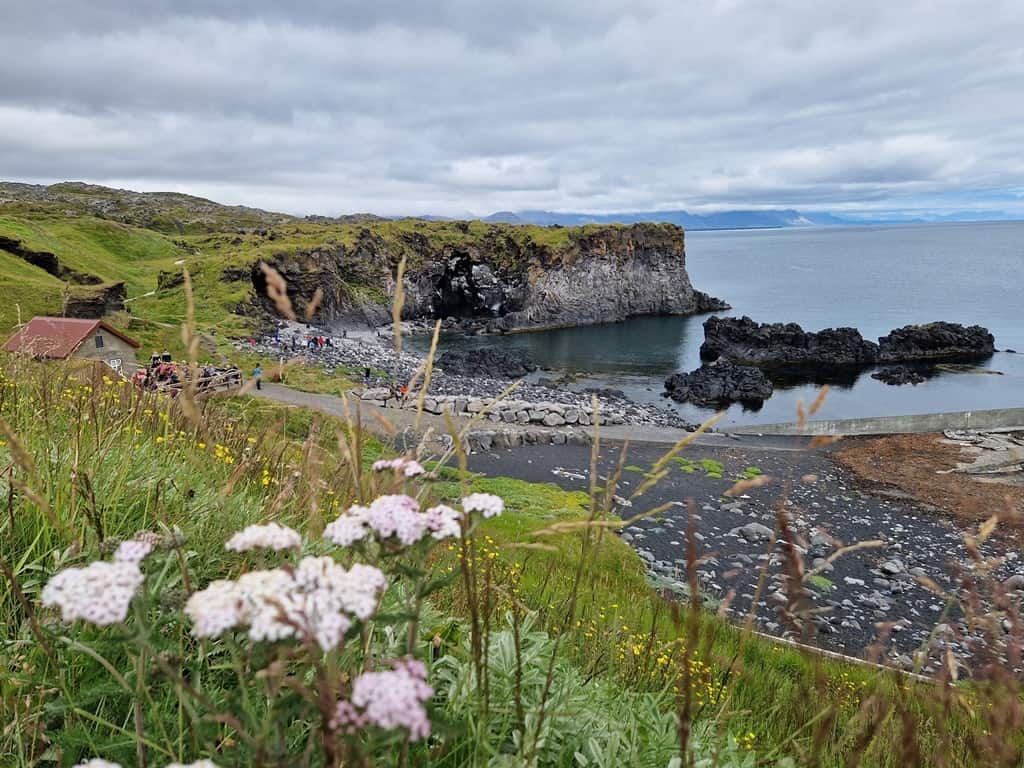
How to get around Snaefellsnes
Located around 135 kilometers by road from Reykjavik, Snaefellsnes is easily reached by car — whether you choose to drive there yourself or join a tour. Though it’s possible to get there by bus, public transport isn’t that reliable around the peninsula, mainly because it won’t reach all of the sights in the region.
By car
The best way to explore the peninsula is by self-driving. It gives you the freedom to stop and start your journey when you feel like it. Getting around Snaefellsnes with your own set of wheels is great; the roads are well-maintained, and routes are easy to follow.
To get there in the first place, it’s a fairly straightforward two-hour drive from the capital. Renting a car from Reykjavik is easy enough, thanks to the many international car rental companies located in town. Make sure to book well ahead of your visit to avoid being disappointed.
It’s probably a good idea to have at least some experience of driving abroad before you think about driving in Iceland — especially in winter, as there are extra hazards to watch out for on the road.
I recommend booking a car through Discover Cars, where you can compare all rental car agencies’ prices, and you can cancel or modify your booking for free. They also guarantee the best price. Click here for more information and to check the latest prices.
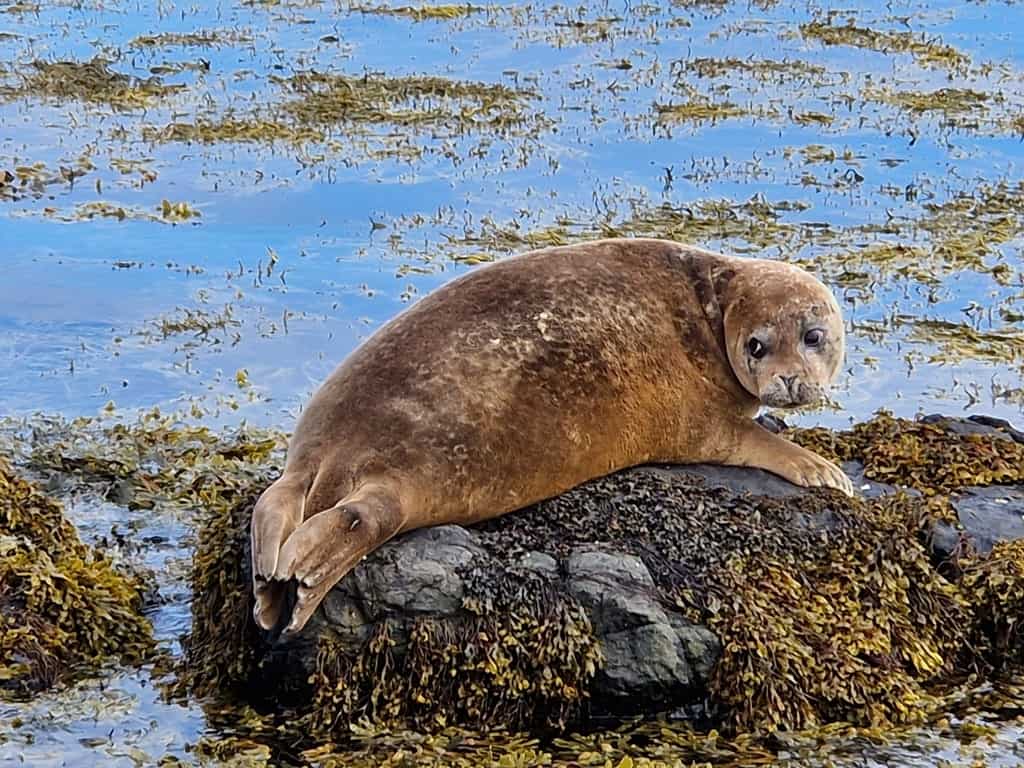
By guided tour
Alternatively, if you don’t feel like driving or don’t have the time to explore the peninsula at your own pace fully, then a guided tour is a viable option.
There are a number of different guided tours that leave Reykjavik and take in a number of sights on the Snaefellsnes Peninsula. Guided tours of the area come in all shapes and sizes, from large coach trips all the way to customizable private tours.
For example, I recommend this Snaefellsnes peninsula full-day tour from Reykjavik. It is a small group tour that whisks you around the main attractions of the peninsula. These include a wild lava field, small villages, the black sand beach, and, of course, Kirkjufell mountain.
Where to stay in Snaefellsnes
Arnarstapi Hotel: Situated in the town of Arnarstapi, this comfortable hotel sits among the beautiful coastal landscape that Snaefellsnes is famous for. From here, the cliffs of Arnarstapi and the town’s port are just a few minute’s stroll away, making this a convenient place to spend a night — or even two if you want to explore further.
The accommodation itself consists of a selection of modern buildings, which feature large, polished bathrooms and beautiful views from the floor-to-ceiling windows. The hotel also features a stylish onsite restaurant and bar, so you won’t have to go far to find something for dinner.
Click here for more information and to check the latest prices.
Hotel Budir: A stone’s throw from the lava field and black sand beach of Budir, this hotel is another stylish modern Icelandic hotel set in an incredibly remote location. One of the most attractive points of Hotel Budir is its setting close to nature. In fact, being set right on the shores of an inlet, you’ll get to see nature right on the doorstep, with seals that travel upstream right next to the hotel.
The views from each window in the property are captivating, while the onsite restaurant feels high-end. Staying here allows you to make the most of exploring the natural wonderland outside while still being able to return to the hotel for some truly luxurious home comforts.
Click here for more information and to check the latest prices.
Hotel Rjúkandi: Quiet and comfortable, Hotel Rjukandi offers down-to-earth accommodation in the form of old cabins that have been carefully updated for modern tastes. Arriving here after a long drive, you can expect a warm welcome and the prospect of a hearty meal at the hotel’s restaurant.
In terms of location, this hotel feels like it’s in the middle of nowhere; in fact, it’s a 25-minute drive to the nearest town of Stykkishólmur. But that, of course, is all part of the appeal of staying at this cool and comfortable hotel.
Click here for more information and to check the latest prices.
Things to See and Do in Snaefellsnes
Kirkjufell mountain and Kirkjufellsfoss waterfall
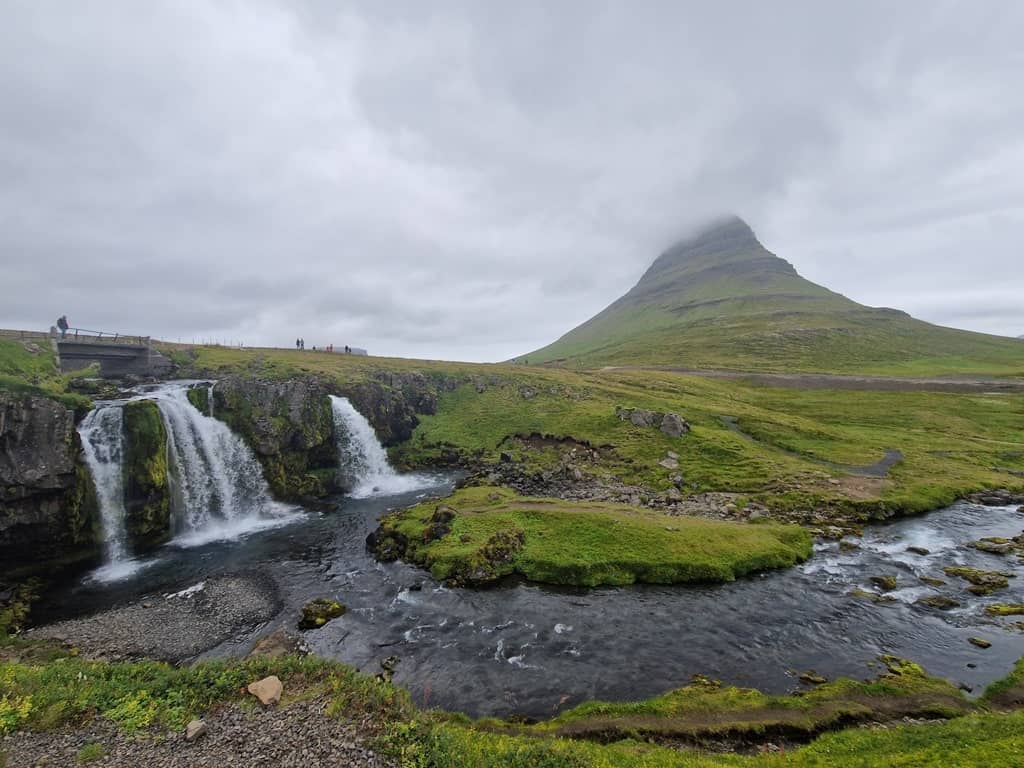
One of the most iconic natural monuments not just on the Snaefellsnes peninsula but in the whole of Iceland, Kirkjufell — meaning “Church Mountain” — is a majestic sight to see. Jutting out from the landscape, this isolated mountain with a narrow point actually featured in Game of Thrones, leading to it being even more popular in recent years. Here you’ll also find the Kirkjufellsfoss waterfall — a particularly stunning sight thanks to the backdrop of the mountain.
Check out: The best waterfalls in Iceland.
Helgafell
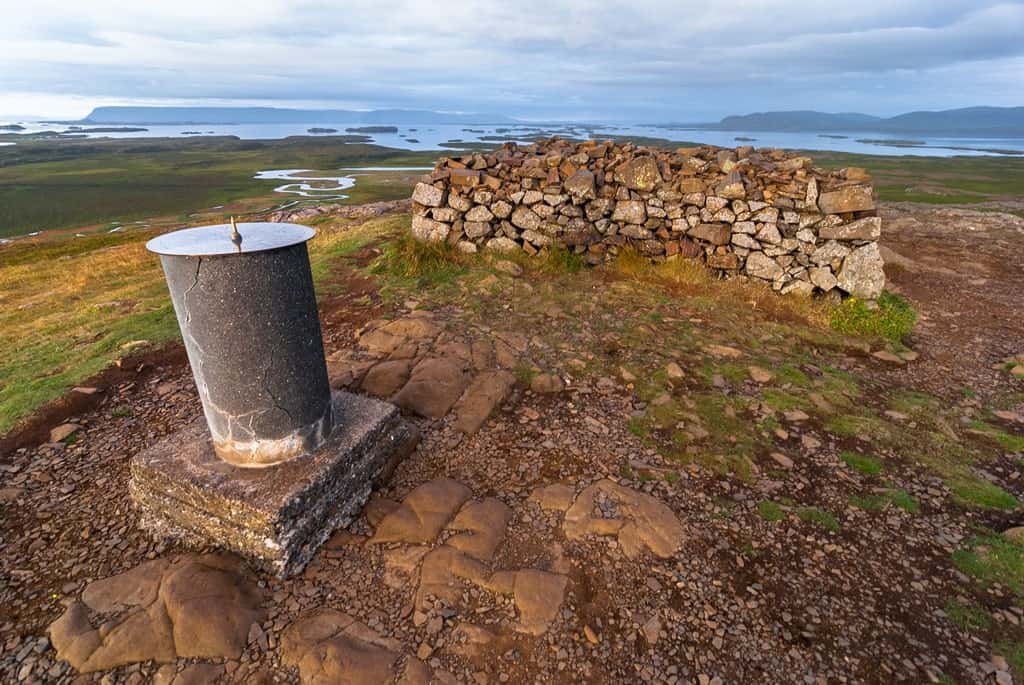
Translating to “Holy Hill,” this 73-meter-tall hillock is shrouded in folklore. Throughout the centuries, it has been home to a variety of landmarks — an Augustine monastery, for one thing. It is also the burial site of Guðrún Ósvífursdóttir, a heroine who is featured in several Icelandic sagas.
It’s easy to overlook this spot, but once you know the history, Helgafell is certainly worth a visit — it’s part of Iceland’s heritage, after all. It’s possible to hike to the top for good views across the surrounding landscape, all the way out to Breiðafjörður bay.
Snæfellsjökull National Park
The centerpiece of Snaefellsnes is Snæfellsjökull National Park. A major draw to the region, this nature reserve dominates the peninsula, covering 170 square kilometers of its westernmost tip. At the heart of the national park is its namesake and one of Iceland’s most famous sights: the 7,000-year-old glacier-topped stratovolcano, Snæfellsjökull.
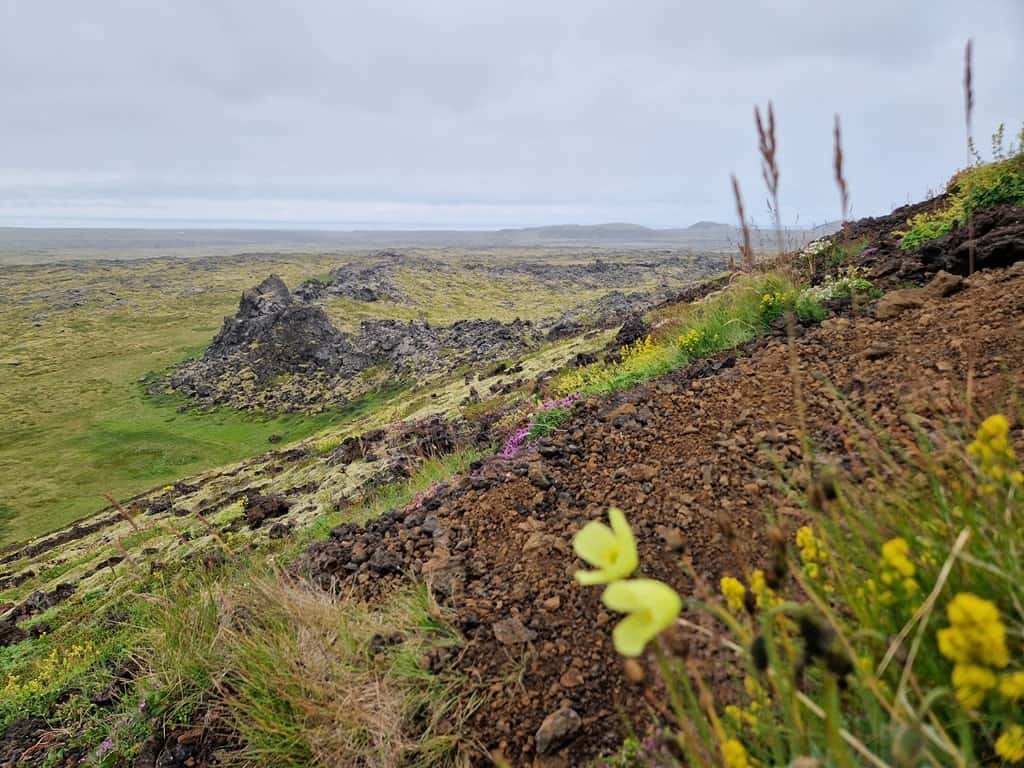
Nearby, the twin basalt towers of Londrangar overlook the sea, while the strangely colored Vatnshellir is a cave that was created by a volcanic eruption over 8,000 years ago. Elsewhere in this impressive national park are birding opportunities and vantage points for whale watching.
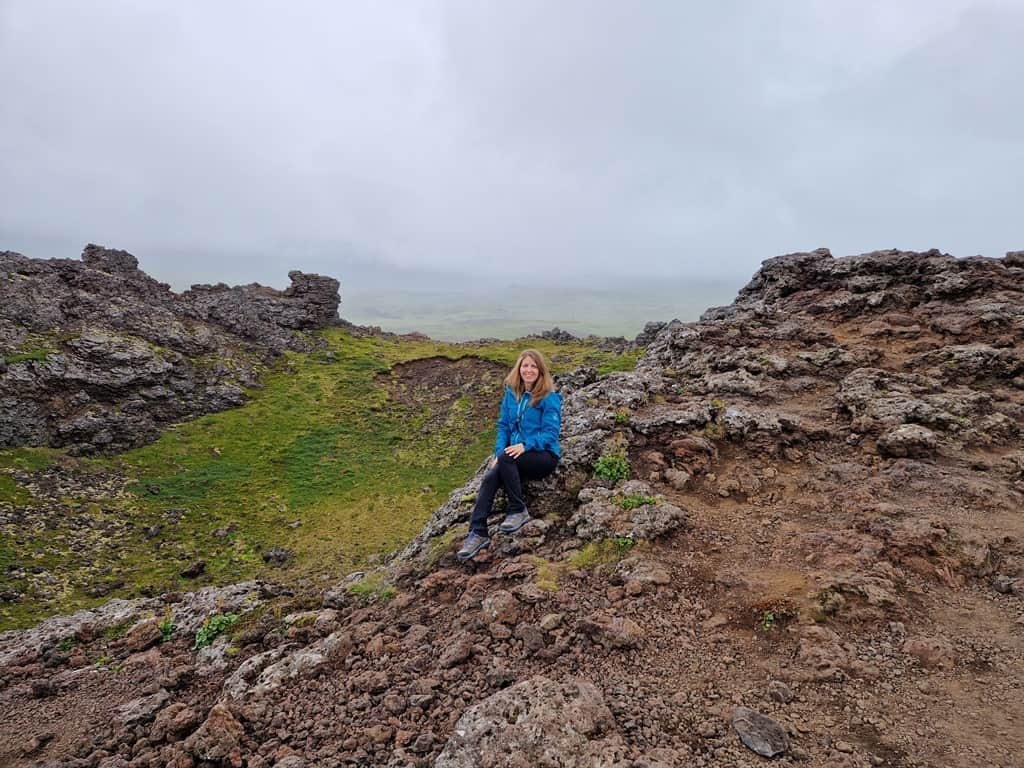
Another popular attraction to see is the Saxhóll Crater. It is believed to have erupted 3,000 years ago. It is located just off Road 574, and it is easy to access through a wooden staircase. The views of the Snæfellsjökull National Park from the top are impressive.
Black sand beach
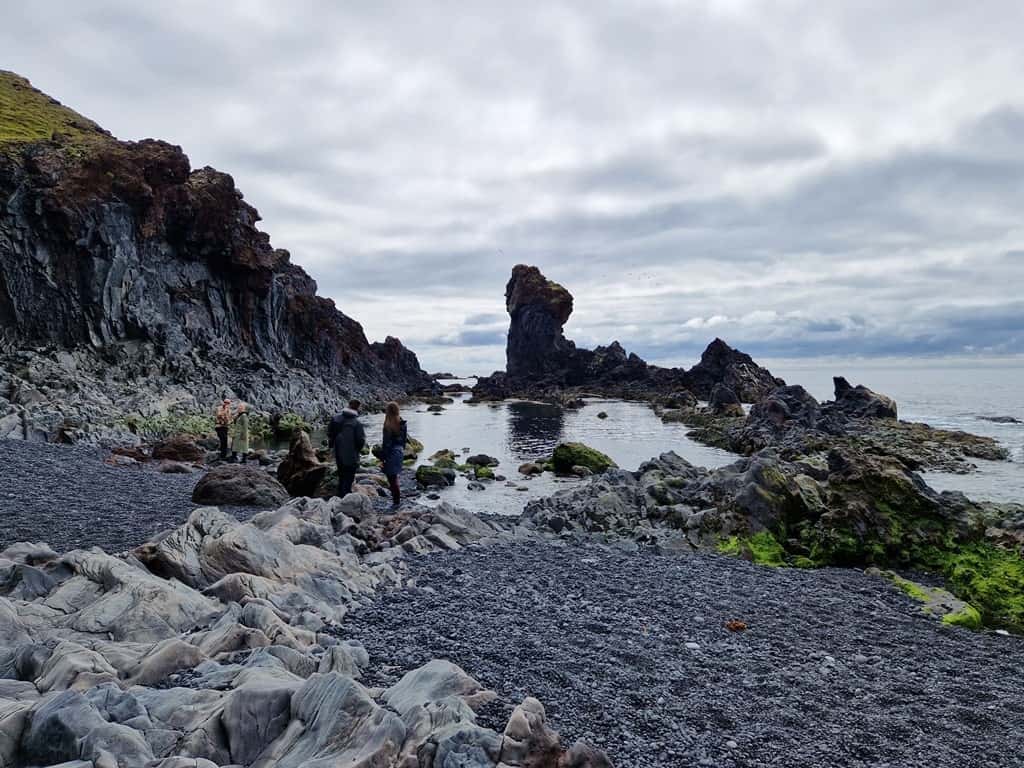
Called Djupalonssandur in Icelandic, this black sand beach is a volcanic slice of shoreline that makes for an incredible sight. The contrast between the turquoise sea and the dark sand, right at the foot of the Snæfellsjökull glacier, has long attracted photographers and adventurers alike.
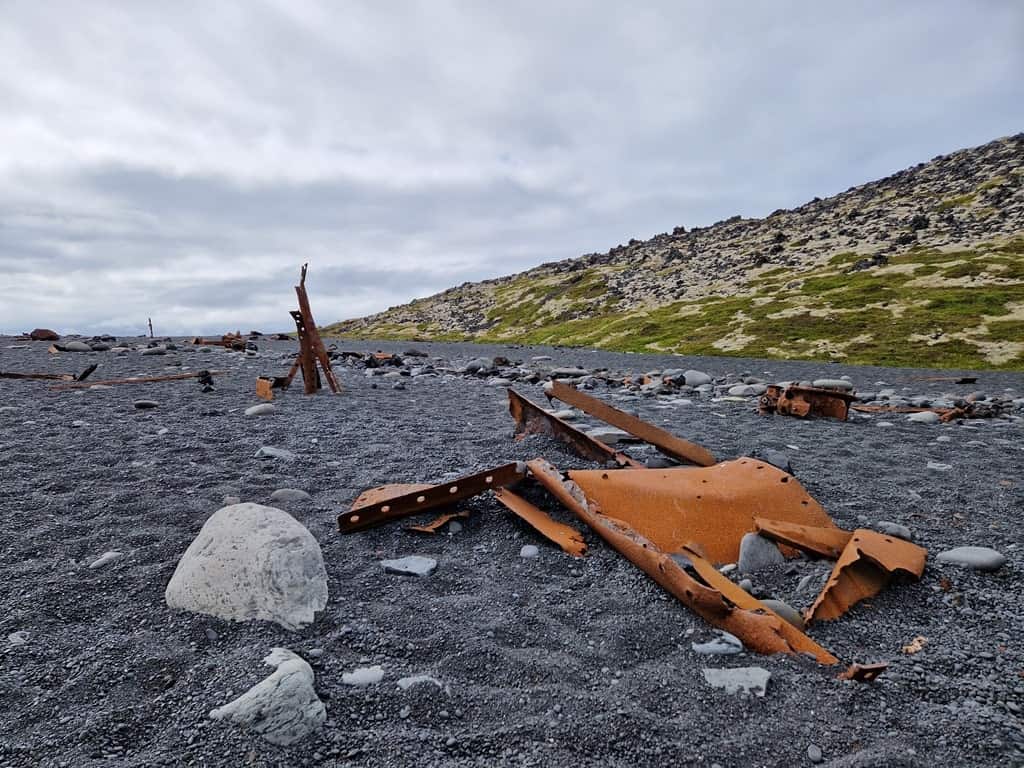
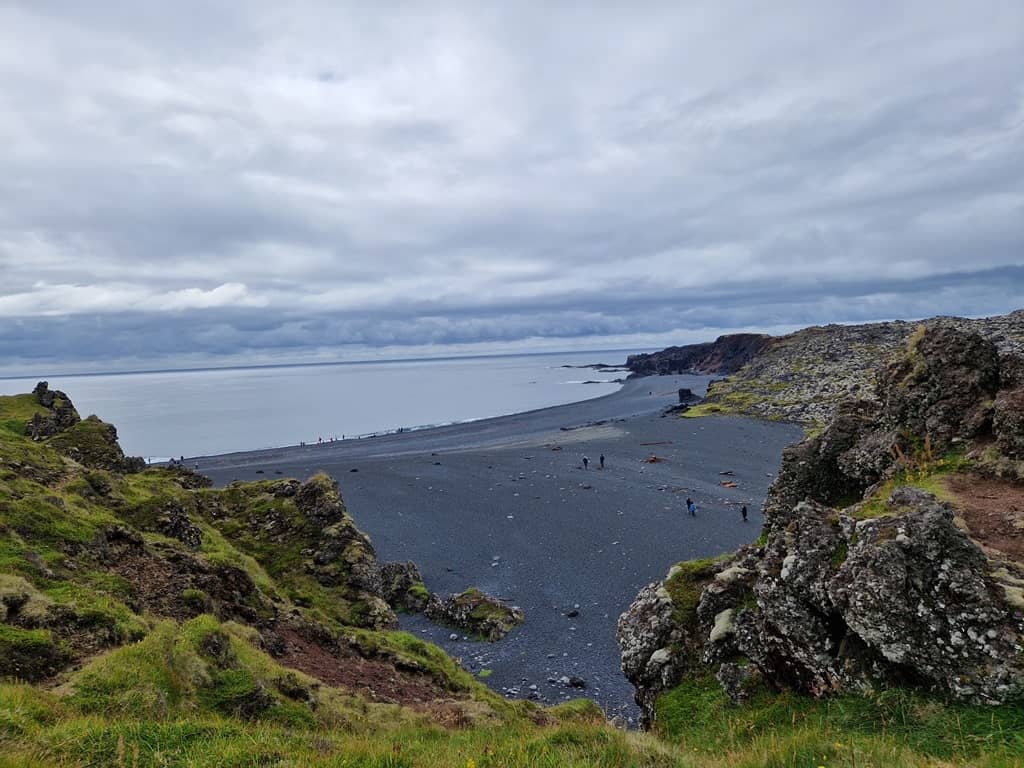
The larger rocks at the beach here have a connection to local folklore. If a fisherman could lift one of the large stones on the beach, they would be deemed fit to work on one of the local fishing boats; those who failed to lift one would not be allowed to work. Make sure you don’t take any of the sand or smaller black pebbles with you — it’s forbidden.
Olafsvik
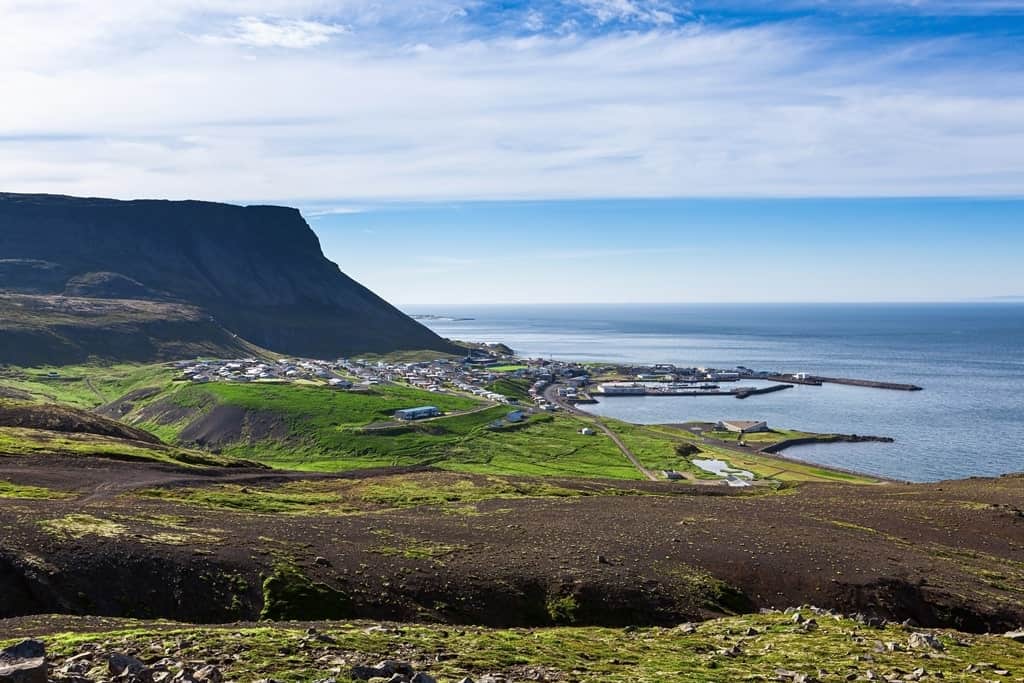
Olafsvik is another town that was once important for trade in the region. Situated on the northern side of the peninsula, the town flourished during the 17th and 18th centuries thanks to trade with Denmark.
Today, it’s home to around 1,000 people and is a picturesque place to visit. Hiking trails around Olafsvik are particularly captivating, some of them leading past impressive natural features such as Baejarfoss Waterfall and Baejargil gorge. Whale-watching is also a possibility here.
Hellissandur
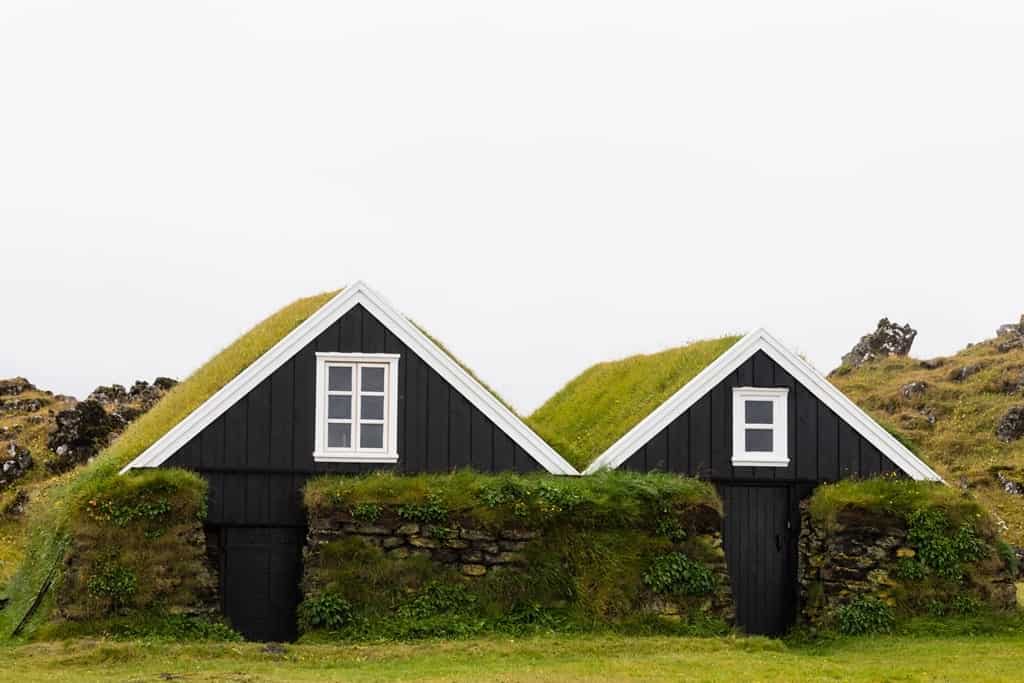
The charming village of Hellissandur is located on the northmost point of the Snaefellsnes peninsula. Tracing its roots back to the 16th century, the important fishing post is now mainly a stop-off for tourists.
Here visitors can make a stop at the local maritime museum and snap some pictures of its houses, made in the traditional turf style — the same way Icelanders have been building them for centuries.
Also in the village is the Hellissandur longwave radio mast. At 412 meters tall, it is the tallest structure in Western Europe and an unmissable landmark. On the outskirts of the village is Ingjaldsholl Church.
Built in 1903, this is the oldest concrete church in the world but has its origins as part of a much older church, mentioned as early as 1317. Just nearby is a dramatic monument to Eggert Ólafsson and Ingibjörg Guðmundsdóttir, an 18th-century explorer and his wife who lived in the area.
Arnarstapi
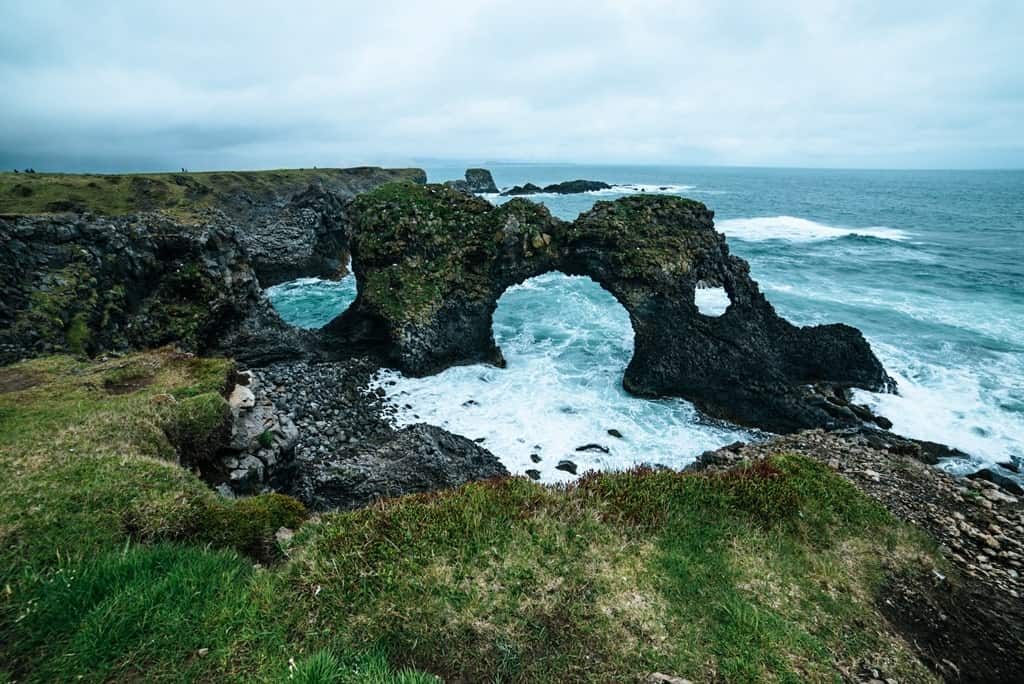
Another quaint fishing village, Arnarstapi, was in its heyday an important trading post with a large population. Its once bustling harbor is today a shadow of its former self, but that doesn’t mean you shouldn’t stop by to explore.
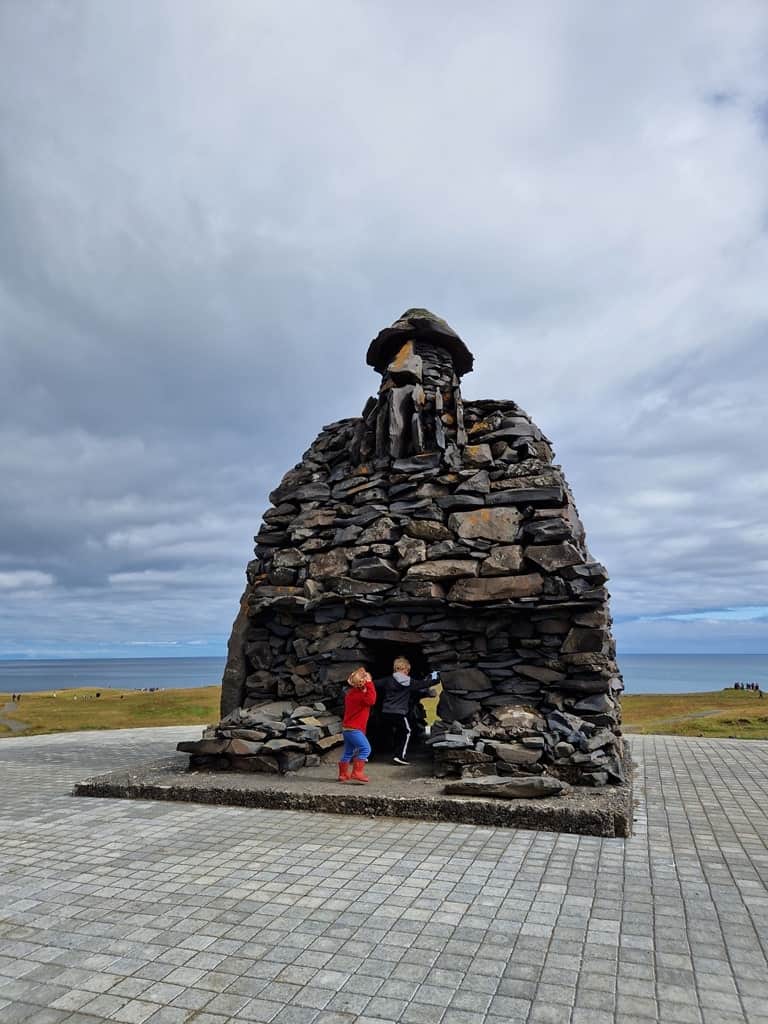
There are a number of colorful old houses and churches to discover here. The natural scenery at Arnarstapi is also enigmatic; one of the main attractions in the town is Gatklettur, an eroded circular stone arch that hugs the coastline. It’s also home to a large colony of Arctic terns that nest around here.
Hellnar
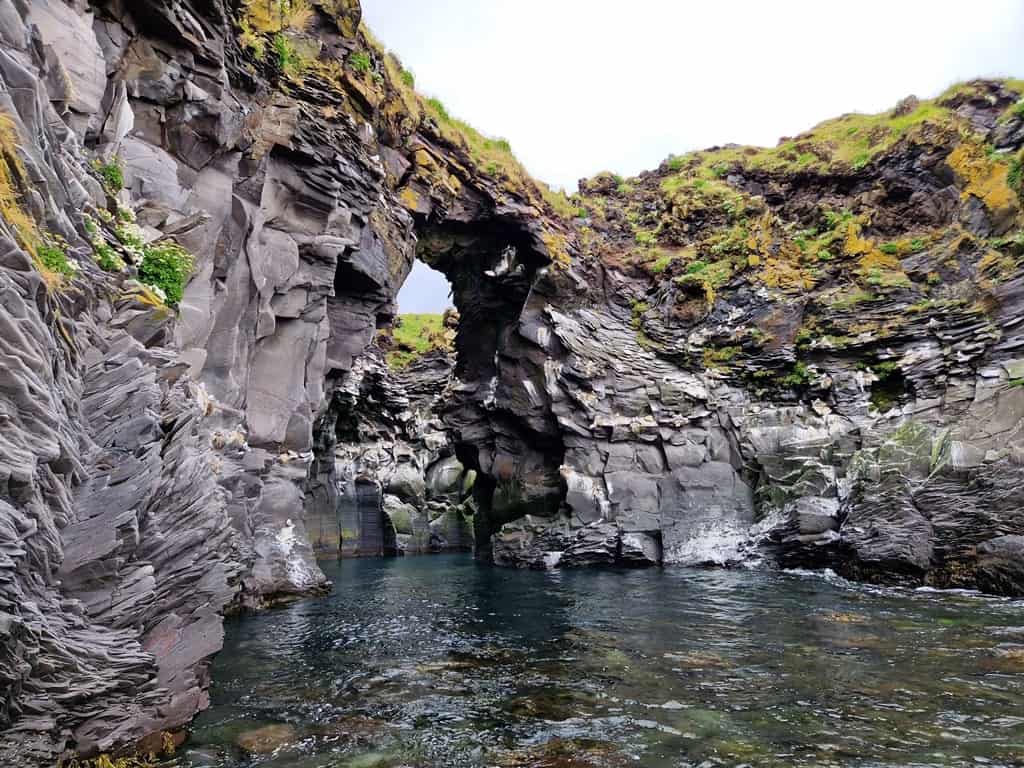
The pretty village of Hellnar was once western Iceland’s largest fishing town, though it may not look like it today. From here, visitors can soak up views of dramatic rock formations along this part of the Snaefellsnes coastline.
If you have time, there’s an attractive hiking trail that leads along the coast from here, which passes by caves and further rock formations (around 2.5 kilometers, taking around an hour to walk). It’s the ideal place to take a break on your journey, especially since it is the location of the Snæfellsjökull National Park visitor center.
Budahraun Lava Field
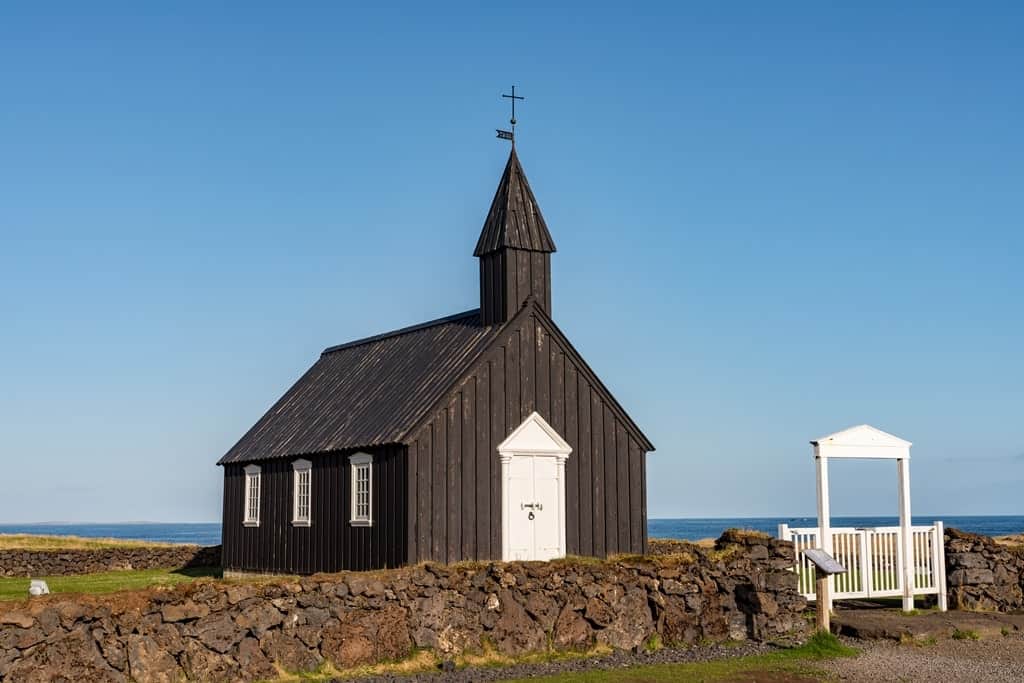
The mysterious landscape of Budahraun Lava Field is like something out of a fantasy novel: tufts of grass stretch out, seemingly for miles, while black volcanic rocks jut out from the stark scenery.
As well as an impressive array of plant life that makes its home here, the lava field is also the location of Budir Black Church — a tiny 19th-century wooden church that cuts a lonesome figure (it’s a popular spot for photographers).
This sandy lava field is an irresistible place to wander; don’t miss the rare golden sands at Budir beach.
Tip: On your way back to Reykjavik, don’t forget to stop at Ytri Tunga Beach for a chance to see the wildlife, including seals.
